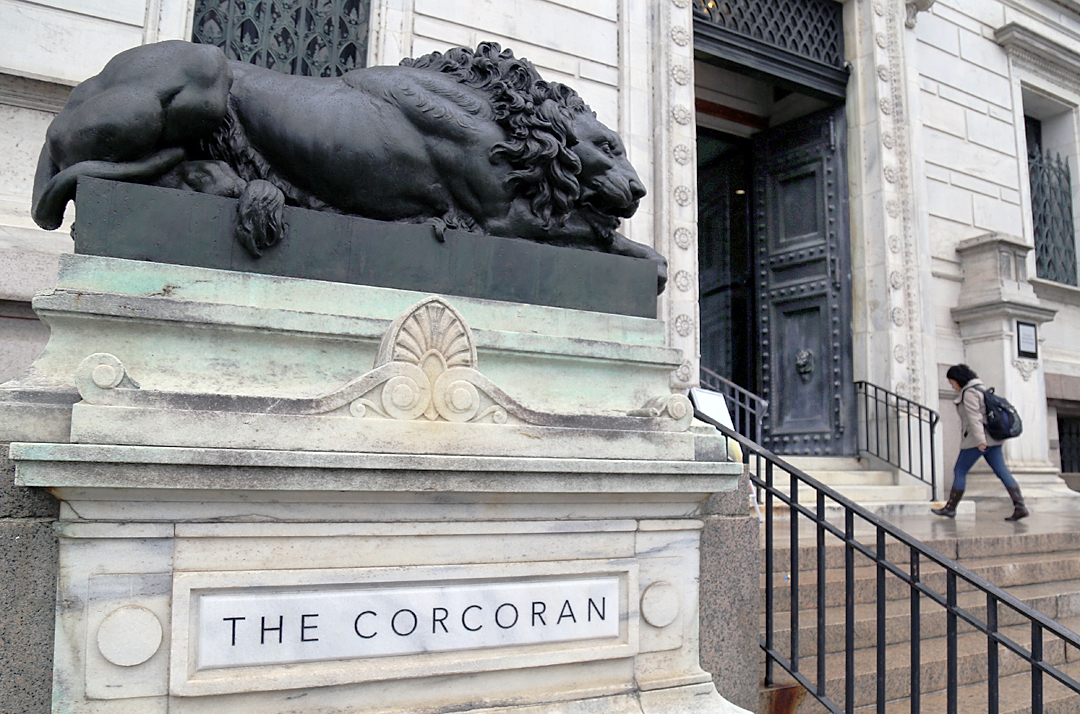By Julyssa Lopez
The George Washington University announced today that a gift from American Express will be used to restore the historic external doors that have graced the Corcoran building’s 17th Street entrance since 1897.
The towering 14-foot doors are made of solid oak and coated in layers of decorative bronze. Weighing an impressive 4,000 pounds, they are a distinctive part of the Flagg building’s 19th-century Beaux Arts design. Support from American Express will help return the building’s entry façade to its original grandeur and improve the doors’ functionality by reversing their swing.
"American Express has a long history of protecting and preserving America’s most treasured places," said Timothy J. McClimon, president of the American Express Foundation. "The Corcoran building is a symbol of our nation’s prodigious cultural and artistic heritage. We hope the restoration of the doors will encourage students and visitors to continue exploring the legacy of this notable Washington landmark."
The university is in the process of phased renovation plans designed to modernize and expand classroom space in the Flagg building. Restoring the doors is in keeping with GW’s commitment to protect the building’s legacy and integrity.
The Flagg building received D.C. historic landmark status in 1964 and was listed in the National Register of Historic Places in 1971. The D.C. Historic Preservation Review Board designated most of the building’s interior historic last year.
"This generous gift from American Express ensures that the doors continue to be an integral part of the Corcoran School for years to come," Corcoran School Director Sanjit Sethi said. "GW’s commitment to restoration is only surpassed by its commitment to educating the next generation of creative practitioners."
An inspection in 2013 found that the swing of the doors had been modified at some point in their history; they originally opened outward and now open inward. Because of the change in direction, the pivot hinges on the doors suffered wear and damage over the last several decades. A team of conservators and experts recommended building customized hinges robust enough for daily use. They also proposed treatment that includes cleaning, repatinating and protecting bronze parts of the door and recasting any missing decorative elements.
Beyond cosmetic improvements, the restoration project will help make the Flagg building’s entrance more compliant with fire codes. The state of the doors restricts accessibility in case of an emergency. Currently, the doors are carefully opened by staff members in the morning and closed again at night. This has resulted in them informally being referred to as the "night doors."
American Express’s gift will allow GW to secure permits and hire a former Corcoran conservator to oversee the project. The university also will have to temporarily remove two glass doors and construct a protective covering in the entrance of the building while work is completed. Once removed, the doors will receive treatment at an off-site facility, after which reinstallation will occur. The work is expected to take six months.


